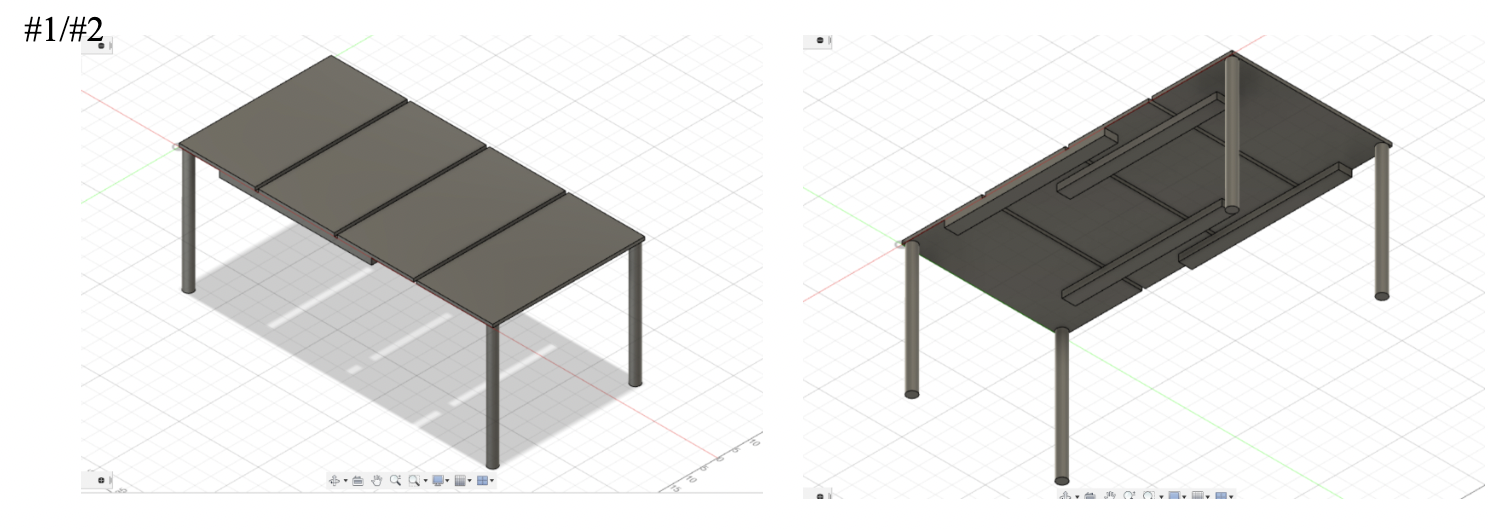Students:
Connor Belcastro ’24 Quin Kirsten ’24


Objective:
Our aim was, and still is, to build a table for a popular dice game. These tables are generally very simple but very difficult to transport. Also, they do not have attachable legs, so they must be balanced on trash cans, other tables, etc. We have designed a table that fixes these issues—it is foldable, so it easily fits in a car, and it will have its own legs, so no outside objects are necessary. We are also going to make a more complex table, one that is maximized for this specific game instead of being simply a 4’x8’ piece of plywood.
Tools/materials used:
Because we are not yet in the building stage, so far we have been focused on sketching and 3D modeling our design, as well as testing different types of wood – we settled on plywood for the 2 4’x4’ halves, because it is light and allows for the dice to bounce off of it quite well. Next semester we see ourselves using a wide variety of woodworking tools.
What’s left:
Moving forwards, we are still close to pace with our original schedule as listed in our Gantt chart (below), despite our design changes. We have not yet begun constructing the table, but everything before that point is complete. We will order the wood, hinges, and legs early on in the second semester, and then focus on constructing the table. We will leave plenty of time to solve any problems that might arise, as well as time to design and paint/coat the surface of our table. As for that, we want to use polyurethane for the coating (durable, resistant to scratches from the dice), but we are still deciding what the paint job will look like.
Team members:
So far, we have been working together with very few separate responsibilities. Connor has contributed slightly more to the practical side (figuring out the placement of hinges, legs, and ways to effectively support the table), and Quin slightly more to the modeling and materials research side.
Image Descriptions:
-Images #1 and #2 are 3D models of our original design – we planned on connecting 4 2’x4’ panels using hinges. The problem with this design is too many moving parts – the legs and under-table supports would all have to be transported separately, limiting its portability.

-#3 is an updated 3D model of our new design – this is the bottom of the table. The table will fold almost like a briefcase along the hinge in the middle. The 1-inch thick piece of wood running along the outside will also help keep it stable. It ends up being larger than our original design when completely folded, but still more portable because it all comes in one piece.
-#4 is the legs of our design which will hinge to stay inside the table when folded

-#5 is our original Gantt Chart

Possible folding leg options:
https://www.texaspokersupply.com/store/adjustable-folding-table-legs/
- The base width is 20 inches
- Holes are in 1-inch increments
- Height adjusts from 24½ to 38 inches
- Black powder coated frame with chrome extension tubes
- Locking device on heavy 16 gauge 1-inch tubular steel
- Joints are tightly welded for long-lasting use
- 300 lbs. Vertical load rating per set
- Sold as a pair (2)
- Screws not included
- USA Made
Questions:
What is a good height for dice game table legs?
Will that leg height be able to fit inside the table when it is folded? Or will we need to buy adjustable legs?
What is the maximum width of the legs? Assuming width must be consistent and is not adjustable, we should probably go with the maximum width, right? This will support the table in the best way possible.
What percentage of the overall weight of the table will the legs be responsible for? Should we minimize this or are the differences in options negligible?
How are we connecting the legs to the table? Assuming we are using some type of hinge, are we going to be able to screw them in without disrupting the flatness of the top surface of the table?
Check out the Spring 2022 Projects for a further update!!!